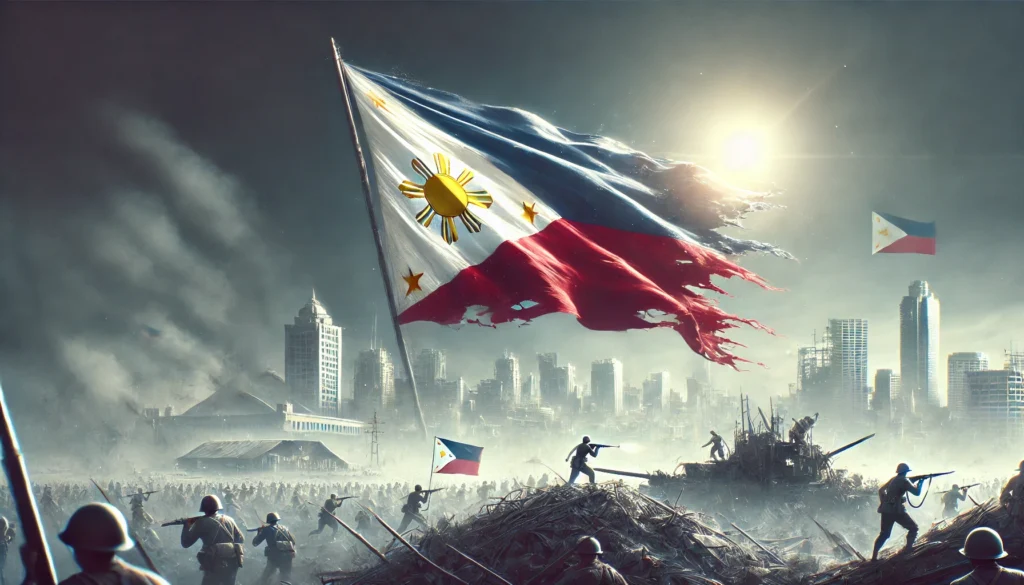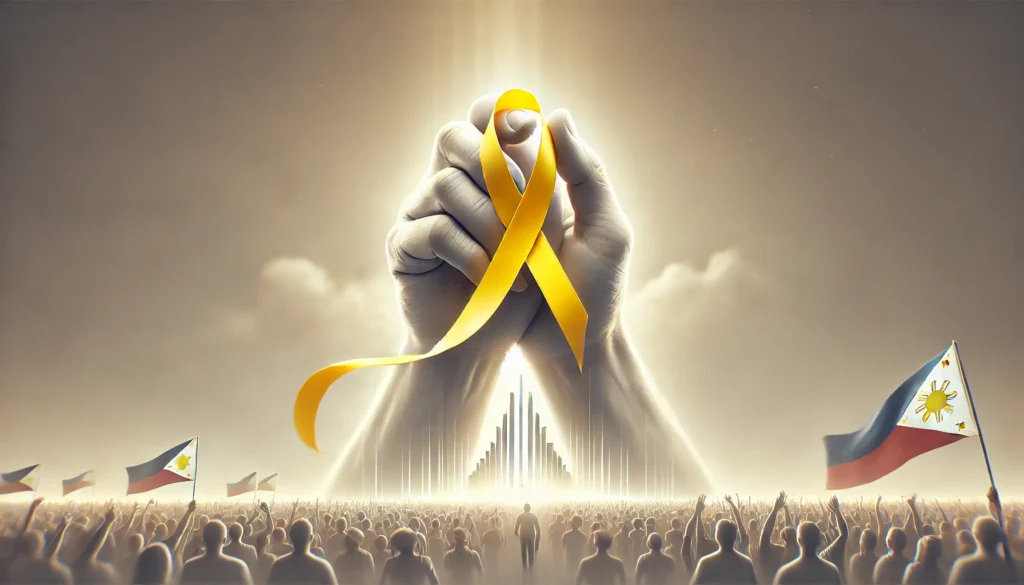The city of Manila, the capital of the Philippines, fell to Japanese forces on January 2, 1942, during the early stages of World War II in the Pacific. For three years, the once-vibrant “Pearl of the Orient” endured a harsh occupation that dramatically altered the lives of its residents. The Japanese military government imposed strict control over every aspect of daily life, from education and media to food distribution and cultural practices.
Economic Impact of Occupation:
The Japanese occupation had severe economic consequences for Manila. The city’s economy, previously thriving under American colonial rule, was restructured to serve Japan’s wartime needs. Key industries were commandeered, and a new currency, the Japanese-issued peso, was introduced, leading to rampant inflation and economic instability.
Cultural and Social Changes:
Manila’s social fabric was torn apart during the occupation. The Japanese authorities implemented policies aimed at “Japanization,” including:
- Mandatory Japanese language classes in schools
- Censorship of media and literature
- Promotion of pro-Japanese propaganda
- Suppression of Filipino and American cultural elements
These measures, coupled with food shortages and the constant fear of arrest by the Kempeitai (Japanese military police), created an atmosphere of tension and resistance among Manila’s population.
The Road to Liberation: Allied Strategy and Preparations
As the tide of the war in the Pacific turned against Japan in 1944, the Allied forces, led by General Douglas MacArthur, began planning the recapture of the Philippines. The liberation of Manila was a key objective in this broader campaign.
Operation Cartwheel:
Before the direct assault on the Philippines, the Allies implemented Operation Cartwheel, a series of campaigns designed to isolate and weaken Japanese positions in the South Pacific. This strategic move set the stage for the eventual liberation of Manila.
Intelligence Gathering:
Crucial to the planning of Manila’s liberation was the intelligence provided by Filipino guerrilla forces. These resistance fighters, operating clandestinely throughout the occupation, supplied valuable information on Japanese troop movements, fortifications, and the condition of the civilian population.
Table 1: Key Allied Preparations for Manila’s Liberation
| Aspect | Details |
|---|---|
| Strategic Planning | Operation Cartwheel (1943-1944) |
| Intelligence | Filipino guerrilla networks |
| Logistics | Buildup of supplies in New Guinea and other Pacific bases |
| Training | Amphibious assault exercises, urban warfare simulations |
| Diplomatic Efforts | Coordination with Philippine Commonwealth government-in-exile |
The Battle Begins: Initial Stages of the Liberation
The campaign to liberate Manila officially began on January 9, 1945, when American forces landed on Luzon, the main island of the Philippines. The advance towards Manila was swift, with minimal Japanese resistance in the early stages.
Swift Advance:
The U.S. 1st Cavalry Division, spearheading the drive to Manila, covered impressive distances in the initial days of the operation. Their rapid progress caught many Japanese defenders off guard and prevented them from fully preparing their defenses.
Japanese Defensive Strategy:
Despite orders from Imperial General Headquarters to abandon Manila and conduct a defensive battle in the mountains, the local Japanese commander, Rear Admiral Sanji Iwabuchi, decided to fight for the city. This fateful decision would have dire consequences for both the defenders and the civilian population.
First Contact:
On February 3, 1945, elements of the 1st Cavalry Division reached the northern outskirts of Manila. The initial encounters were marked by sporadic resistance, giving hope for a quick liberation. However, as Allied forces penetrated deeper into the city, they encountered increasingly fierce opposition.
Urban Warfare: The Battle for Manila Intensifies
As the battle moved into the heart of Manila, it transformed into some of the most intense urban fighting of the Pacific War. The dense urban environment, with its narrow streets and sturdy colonial-era buildings, provided ideal defensive positions for the Japanese forces.
Tactical Challenges:
Urban combat presented unique challenges for the American forces, who had to adapt their tactics on the fly. Key difficulties included:
- Limited maneuverability for tanks and other vehicles
- Restricted fields of fire
- Difficulty in distinguishing combatants from civilians
- Risk of friendly fire incidents
- Constant threat of snipers and hidden enemy positions
Japanese Defenses:
The Japanese had converted many of Manila’s prominent buildings into fortresses. Government offices, universities, and even churches were turned into strongpoints bristling with machine guns and artillery.
Table 2: Key Strongpoints in the Battle for Manila
| Location | Significance | Duration of Fighting |
|---|---|---|
| Intramuros | Historic walled city, final Japanese stronghold | Feb 23 – Mar 3, 1945 |
| Manila University | Converted into a fortress by Japanese forces | Feb 14 – 23, 1945 |
| Legislative Building | Heavily fortified government structure | Feb 18 – 22, 1945 |
| Manila Hotel | Strategic position overlooking Manila Bay | Feb 17 – 18, 1945 |
The Plight of Civilians: Caught in the Crossfire
As the battle raged on, Manila’s civilian population found themselves in an increasingly desperate situation. Caught between the advancing Allied forces and the entrenched Japanese defenders, civilians suffered immensely.
Atrocities and War Crimes:
In the final weeks of the occupation, elements of the Japanese forces engaged in widespread atrocities against the civilian population. These included:
- Mass executions
- Rape and sexual violence
- Indiscriminate killing of suspected guerrillas or sympathizers
- Destruction of civilian shelters and food stores
Humanitarian Crisis:
The intense fighting led to a severe humanitarian crisis within the city. Civilians faced:
- Acute shortages of food and clean water
- Lack of medical supplies and treatment
- Destruction of homes and places of shelter
- Constant danger from artillery fire and aerial bombardment
Refugee Movement:
As word of the Allied advance spread, many civilians attempted to flee the combat zones. This mass movement of people further complicated the military operations and stretched the limited resources available for humanitarian aid.
The Role of Filipino Guerrillas in the Liberation
Throughout the battle for Manila, Filipino guerrilla forces played a crucial role in supporting the Allied advance. These resistance fighters, who had been operating covertly during the Japanese occupation, provided invaluable assistance in various ways.
Intelligence Gathering:
Guerrilla units supplied up-to-date intelligence on Japanese positions, troop movements, and the locations of civilian concentrations. This information was crucial in planning Allied operations and minimizing civilian casualties.
Direct Combat Support:
In many instances, guerrilla fighters engaged in direct combat alongside American forces. Their knowledge of the local terrain and urban layout proved invaluable in navigating the complex battlespace of Manila.
Civilian Protection:
Many guerrilla units took on the responsibility of protecting and guiding civilians away from the most intense areas of fighting. This not only saved countless lives but also helped streamline the Allied advance by reducing the number of civilians in combat zones.
Table 3: Contributions of Filipino Guerrillas to Manila’s Liberation
| Aspect | Details |
|---|---|
| Intelligence | Provided maps, troop locations, and fortress details |
| Combat Support | Engaged in street fighting, sniping, and sabotage |
| Civilian Aid | Guided refugees, provided food and medical assistance |
| Post-Liberation | Assisted in maintaining order and basic services |
The Final Push: Securing Victory
By late February 1945, the battle for Manila had entered its final, most brutal phase. The remaining Japanese forces, now concentrated in the historic walled city of Intramuros, were determined to fight to the last man.
Assault on Intramuros:
The assault on Intramuros began on February 23, 1945. American forces, supported by Filipino guerrillas, faced fanatical resistance as they attempted to breach the thick walls of the old city.
Artillery and Air Support:
To overcome the formidable defenses, the Allies employed heavy artillery and air strikes. While effective in reducing Japanese strongpoints, this bombardment also caused significant damage to historic structures and further endangered trapped civilians.
Hand-to-Hand Combat:
Much of the fighting in Intramuros devolved into close-quarters combat, with soldiers battling room-to-room and floor-to-floor in the ancient buildings.
Japanese Last Stand:
As their situation became increasingly hopeless, many Japanese soldiers chose suicide over surrender. Rear Admiral Iwabuchi himself is believed to have taken his own life as American forces closed in on his command post.
The Aftermath: A City in Ruins
On March 3, 1945, Manila was officially declared secured by American forces. However, the cost of liberation had been enormous. The month-long battle had left the city in ruins and resulted in staggering casualties among both combatants and civilians.
Physical Destruction:
Manila emerged from the battle as one of the most heavily damaged Allied cities of World War II. The extent of destruction included:
- Widespread damage to residential areas
- Destruction of historic buildings and cultural landmarks
- Severe damage to infrastructure (roads, bridges, utilities)
- Burning of entire districts, particularly in the city center
Civilian Casualties:
Estimates of civilian deaths during the battle vary widely, but most historians agree that between 100,000 to 500,000 Filipino civilians lost their lives. Many were killed by Japanese atrocities, while others fell victim to American shellfire or the general privations of urban combat.
Military Losses:
The battle also exacted a heavy toll on the combatants:
- American forces suffered around 1,000 killed and 5,500 wounded
- Japanese casualties are estimated at 16,000 killed, with few survivors
Table 4: Casualties and Damage in the Battle for Manila
| Category | Estimated Numbers |
|---|---|
| Civilian Deaths | 100,000 – 500,000 |
| U.S. Military Casualties | 1,000 killed, 5,500 wounded |
| Japanese Military Casualties | Approximately 16,000 killed |
| Buildings Destroyed | 70% of city structures |
The Long Road to Recovery
In the wake of the battle, Manila faced the monumental task of rebuilding. The physical reconstruction of the city was paralleled by efforts to heal the deep psychological scars left by the occupation and the brutal fighting.
Immediate Challenges:
In the days and weeks following liberation, the priorities were:
- Clearing rubble and unexploded ordnance
- Restoring basic services (water, electricity, sanitation)
- Providing emergency medical care and food distribution
- Identifying and burying the dead
Long-Term Reconstruction:
The rebuilding of Manila would take years and required significant investment. Key aspects of the reconstruction effort included:
- Rebuilding of government buildings and infrastructure
- Restoration of the economic base and commercial districts
- Housing projects to accommodate the displaced population
- Preservation and restoration of surviving historical sites
Cultural and Social Recovery:
Beyond the physical rebuilding, Manila’s residents faced the challenge of coming to terms with the trauma they had endured. This process involved:
- Memorialization of the victims
- Documentation of war experiences
- Efforts to reunite separated families
- Gradual reestablishment of civic and cultural institutions
Historical Significance and Legacy
The Battle for Manila stands as one of the most significant urban battles of World War II. Its impact extended far beyond the immediate military outcome, shaping the postwar development of the Philippines and influencing collective memory in profound ways.
Military Lessons:
The battle provided important lessons in urban warfare that would influence military doctrine for years to come. The challenges faced by American forces in Manila highlighted the need for specialized training and equipment for city fighting.
Political Ramifications:
The liberation of Manila was a key step in reestablishing Philippine sovereignty. It paved the way for the formal independence of the Philippines in 1946, although the relationship with the United States would remain close.
Cultural Impact:
The battle left an indelible mark on Filipino culture and national identity. It has been commemorated in literature, film, and public memorials, serving as a testament to the resilience of the Filipino people in the face of immense adversity.
International Relations:
The shared experience of the battle and subsequent reconstruction efforts strengthened ties between the Philippines and the United States. However, it also laid the groundwork for future debates about the nature of this relationship and the legacy of American influence in the Philippines.
Remembering Manila’s Liberation Today
As we approach the 80th anniversary of the Battle for Manila, the events of 1945 continue to resonate in Philippine society and beyond. Modern commemorations and scholarly work seek to balance recognition of the military achievement with acknowledgment of the tremendous human cost.
Educational Initiatives:
Efforts to educate younger generations about the battle and its context have increased in recent years. These include:
- Integration of the battle into school curricula
- Development of interactive museum exhibits
- Digital archives of survivor testimonies
Preservation Efforts:
Surviving structures and sites related to the battle have become focal points for historical preservation:
- Restoration of damaged sections of Intramuros
- Maintenance of military cemeteries and memorials
- Conservation of artifacts and documents from the period
Ongoing Debates:
Scholarly and public discussions continue to explore various aspects of the battle and its legacy:
- The necessity and proportionality of the urban combat
- Responsibility for civilian casualties
- The battle’s place in the broader narrative of Philippine-American relations
Table 5: Key Sites of Remembrance in Modern Manila
| Site | Significance | Current Status |
|---|---|---|
| Memorare Manila Monument | Memorial to civilian victims | Active site of commemoration |
| Intramuros | Historic walled city, final battle site | Restored, major tourist attraction |
| Manila American Cemetery | Burial site for American and Allied war dead | Maintained by the American Battle Monuments Commission |
| Libingan ng mga Bayani | National Heroes’ Cemetery, includes WWII veterans | Active military cemetery |
The Liberation of Manila remains a pivotal moment in Philippine history, emblematic of both the horrors of war and the resilience of the human spirit. As we continue to study and remember this costly victory, we gain not only historical insight but also valuable lessons about the importance of peace, the complexities of urban warfare, and the enduring impact of conflict on societies.
Disclaimer: While every effort has been made to ensure the accuracy of the information presented in this blog post, historical interpretations and statistics may vary among sources. Readers are encouraged to report any inaccuracies or provide additional verified information for review and potential updates. The field of historical research is dynamic, and new insights may emerge over time.




